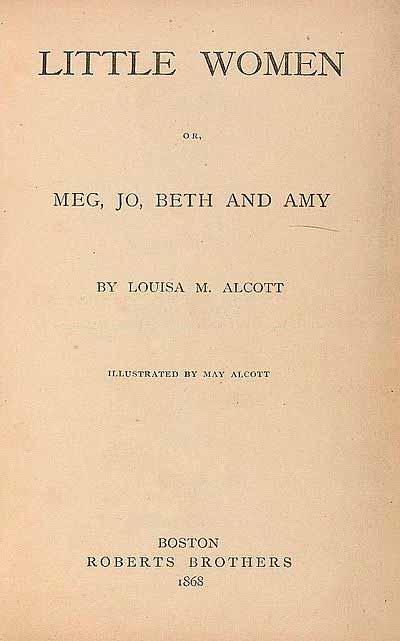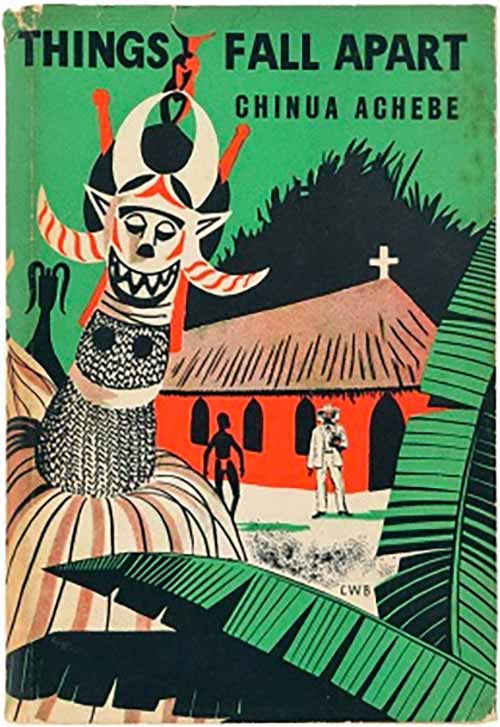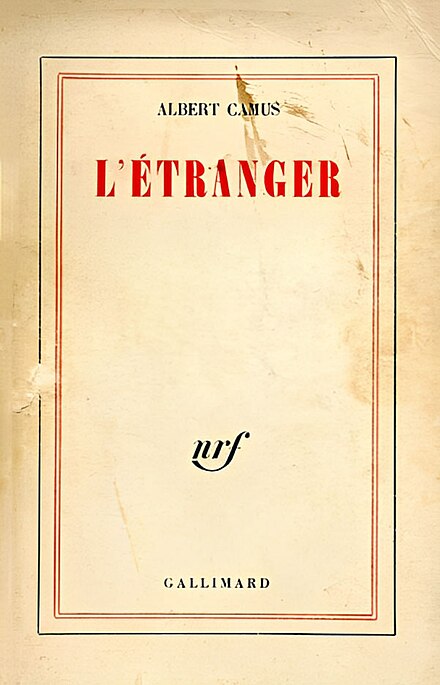The written word is a powerful tool, capable of inciting emotion and inspiring thought. Few stories have accomplished this feat quite like Ambrose Bierce’s “An Occurrence at Owl Creek Bridge.” A literary masterpiece, the story delves into the depths of life, death, and everything in between. Ambrose Bierce is a notable figure in the literary world, known for his twisted tales and satirical style that continue to captivate readers to this day.
The Plot of An Occurrence at Owl Creek Bridge
In the tale by Ambrose Bierce, An Occurrence at Owl Creek Bridge, the protagonist, Peyton Farquhar, is about to be hanged by Union soldiers during the American Civil War for attempting to sabotage a railroad bridge. As he awaits his death, he imagines his escape and journey home to his wife and children.
| Main Characters: | Peyton Farquhar: the protagonist | Union Soldiers: the antagonists | |
|---|---|---|---|
| Events: | Peyton’s capture and sentence to death | His imagined escape and journey home | The revelation of his true fate |
The story is told in three parts, with the middle section describing Farquhar’s imagined journey in intricate detail. The final section reveals that his escape and journey home were just a reverie, and he is, in fact, hanged at Owl Creek Bridge.
The Theme of Life and Death in An Occurrence at Owl Creek Bridge
At its core, “An Occurrence at Owl Creek Bridge” is a story about the fragility and impermanence of life. Peyton Farquhar, the protagonist, faces death as a consequence for his actions as a Confederate sympathizer during the Civil War. However, the story takes a surreal turn when Farquhar manages to escape his execution and embarks on a journey towards the afterlife.
The symbolism of the bridge is crucial to understanding the theme of life and death in the story. The bridge represents the boundary between life and death, and Farquhar’s journey across it is a metaphorical representation of his passage from one realm to another. The story’s use of vivid imagery and sensory details emphasizes the intense emotional and psychological impact of Farquhar’s experience as he struggles to come to terms with his own mortality.
The story also incorporates elements of the supernatural, which further underscore the theme of life and death. Farquhar’s encounter with the mysterious figure who guides him towards the afterlife is one such example. This encounter suggests that there is a higher power at work in the universe that governs the cycles of life and death.
The Metaphorical Significance of the Journey
Through Farquhar’s journey towards the afterlife, the story explores the idea that death is a natural part of the human experience. The fact that Farquhar ultimately cannot escape death reinforces this theme. However, the story does not suggest that death is something to be feared or avoided. Instead, it presents death as a transformational experience that is necessary for the cycle of life to continue.
The story’s poetic language and use of metaphorical imagery make it a powerful meditation on the human condition. It reminds us that life is fleeting and that death is an inevitable part of the journey. However, it also suggests that there is something greater than ourselves at work in the universe, something that connects us all and gives meaning to our existence.
The Significance of the Setting in An Occurrence at Owl Creek Bridge
The setting of An Occurrence at Owl Creek Bridge is essential to its meaning and interpretation. Set during the American Civil War, the story takes place in Northern Alabama, near a railroad bridge that crosses the Owl Creek. The location of the bridge, which connects two opposing sides, serves as a metaphor for the divided nation and the theme of duality in the story.
The physical setting also plays a significant role in the plot. The description of the landscape, including the “deep, cool water” and the “dense forest” creates a vivid backdrop for the events that unfold. The contrast between the natural beauty and the violence of war emphasizes the brutality and senselessness of the conflict.
The Significance of the Bridge
The bridge itself is a symbol with multiple layers of meaning. On a literal level, it represents the site of a strategic military target. However, it also serves as a metaphor for the connections and divisions between opposing forces, life and death, and reality and illusion. The bridge becomes a liminal space, where different states of being and meaning converge.
The protagonist, Peyton Farquhar, is hanged from the bridge, and his journey becomes a metaphor for the transition from life to death. The use of the bridge as a symbol highlights the theme of duality and the interplay between opposing forces throughout the story.
The Historical Context
The historical context of the American Civil War is crucial to understanding the story’s significance. Bierce himself served as a Union soldier during the war, and his experiences influenced his writing. The story’s depiction of war as a senseless and brutal conflict reflects Bierce’s own disillusionment with the war and its impact on American society.
Furthermore, the American Civil War was a turning point in American history, marking a significant shift in the nation’s identity and values. The story’s setting in Northern Alabama, a region that experienced intense conflict during the war, emphasizes the division and turmoil that characterized this period.
Overall, the setting of An Occurrence at Owl Creek Bridge serves as a powerful symbol for the themes of duality, connection, and transition. Bierce’s use of metaphor and imagery highlights the complex interplay between different states of being and meaning, while also providing a commentary on the historical and cultural context of the American Civil War.
The Protagonist in An Occurrence at Owl Creek Bridge
Peyton Farquhar, the protagonist in Ambrose Bierce’s “An Occurrence at Owl Creek Bridge,” is a wealthy plantation owner and a fervent supporter of the Confederate cause during the American Civil War. Despite his wealth and status, Farquhar is restless and seeks personal glory through military action. His impulsive nature and desire for adventure ultimately lead to his tragic fate.
Farquhar’s motivations are complex, driven by both his allegiance to the Confederacy and his personal ego. His willingness to risk his life for the cause is spurred on by a desire to prove his bravery and to be remembered as a hero. The reader becomes intimately familiar with Farquhar’s thoughts and emotions, as the story is primarily told from his perspective. Bierce’s vivid and poetic language captures Farquhar’s descent into madness and hallucination, creating a haunting and tragic character study.
Despite Farquhar’s flaws, his ultimately sympathetic portrayal invites the reader to identify with his struggle and empathize with his tragic end. He represents the human cost of war and the dangers of unchecked ambition.
The Psychology of Peyton Farquhar
Bierce’s portrayal of Farquhar is deeply psychological, examining the character’s innermost thoughts and emotions. Farquhar’s disorientation and confusion following his capture and impending execution reflect the trauma and anxiety associated with war. The vivid descriptions of his hallucinations and fantasies suggest a desperate attempt to escape the reality of his situation.
Farquhar’s inner turmoil is further compounded by the guilt he feels for his actions. He is aware of the brutality and violence of war, yet cannot resist the lure of glory and adventure. This inner conflict highlights the complex and often contradictory motivations that drive individuals to participate in armed conflict.
The Role of Time in An Occurrence at Owl Creek Bridge
Time is a central element in Ambrose Bierce’s “An Occurrence at Owl Creek Bridge.” The author masterfully manipulates time to create a sense of confusion and disorientation in the reader, reflecting the protagonist’s own distorted perception of time.
The story begins with a seemingly straightforward chronological sequence of events, but as it progresses, Bierce blurs the lines between reality and fantasy, creating a sense of timelessness. This is achieved through the use of flashbacks and distorted imagery, as the protagonist’s thoughts wander to his past and his imagined future.
Bierce also plays with time by slowing it down, creating a sense of extended suspense in the moments leading up to Farquhar’s supposed execution. The sound of the ticking watch, for example, becomes increasingly pronounced, emphasizing the heightened awareness of time.
The Non-Linear Sequence of Events
Bierce intentionally disrupts the chronological order of events to create a disorienting effect. Upon first reading, it appears that the story follows a linear plot, beginning with Farquhar’s preparation for execution and ending with his death. However, upon closer inspection, the story is revealed to be a non-linear sequence of events as Farquhar’s escape attempt is actually a hallucination occurring during his final moments before death.
This manipulation of time allows Bierce to create an unexpected twist at the end, dramatically altering the reader’s perception of reality in the story. It also emphasizes the power of the mind and its ability to distort one’s perception of time and reality.
Conclusion
Time plays a significant role in “An Occurrence at Owl Creek Bridge” as Bierce masterfully controls the suspension of time to create a feeling of disorientation and confusion in the reader. By blurring the lines between reality and fantasy, Bierce creates a powerful commentary on the fragility of the mind and its ability to distort one’s perception of time and reality in the face of death.
The Irony in An Occurrence at Owl Creek Bridge
The central irony of “An Occurrence at Owl Creek Bridge” lies in its unexpected twist ending. Throughout the story, the reader is led to believe that the protagonist, Peyton Farquhar, has miraculously escaped his execution and is on his way home to his wife and children. However, it is revealed in the final lines that this was all a hallucination and that Farquhar is, in fact, dead.
Bierce employs a number of techniques to create this sense of dramatic irony. One such technique is the use of foreshadowing. For example, when Farquhar falls into the river, he imagines that he is swimming downstream at a rapid pace and that “no physical exertion could have been more intolerable.” This prefigures the revelation that Farquhar has actually drowned, and the “intolerable” effort he feels is the struggle of his dying body.
“The man who was engaged in being hanged was apparently about thirty-five years of age. He was a civilian, if one might judge from his habit, which was that of a planter.”
Another example of irony in the story is the fact that Farquhar is ultimately executed not for his actions, but for his thoughts. He has not actually committed any crime; rather, he has merely entertained the idea of committing sabotage against the Union army. This highlights the arbitrary and unjust nature of war, and the tragic consequences that can result from it.
In the end, “An Occurrence at Owl Creek Bridge” is a powerful meditation on the nature of life, death, and the human condition. Through its masterful use of irony, symbolism, and metaphor, the story forces us to confront our own mortality and the fragile illusions we construct to shield ourselves from it. Ambrose Bierce has given us a work of art that will continue to resonate with readers for generations to come.
The Writing Style of Ambrose Bierce in An Occurrence at Owl Creek Bridge
Through his use of language, imagery, and symbolism, Ambrose Bierce creates a haunting and poetic atmosphere in An Occurrence at Owl Creek Bridge. Bierce’s writing style is characterized by its economy and precision, with each word carefully chosen to create maximum impact. His sparse, yet evocative descriptions transport the reader to the banks of the Owl Creek and into the mind of protagonist Peyton Farquhar.
Bierce’s use of imagery is particularly striking. He employs vivid and often unsettling descriptions to create a sense of unease and foreboding. For instance, during the opening scene, he describes the setting as “a forest at nightfall, with occasional patches of moonlight…the gnarled and fantastic vegetation” (Bierce). This description not only sets the scene but also creates an eerie and dreamlike atmosphere that foreshadows the events to come.
Bierce’s use of symbolism is also notable. The Owl Creek Bridge itself serves as a powerful symbol of death and transition. As Peyton Farquhar falls from the bridge, he is transported from the realm of the living to the afterlife. Additionally, the ticking of his watch serves as a symbol of the passage of time and the inevitability of death.
Overall, Bierce’s writing style in An Occurrence at Owl Creek Bridge is masterful in its ability to create a haunting and unforgettable reading experience. His use of language, imagery, and symbolism work together to transport the reader to another world and to explore complex themes of life, death, and the nature of reality.
The Legacy of An Occurrence at Owl Creek Bridge
More than a century after its initial publication in 1890, “An Occurrence at Owl Creek Bridge” remains a timeless piece of literature that continues to captivate readers and inspire other writers. Ambrose Bierce’s story is widely regarded as a masterpiece of short fiction, showcasing his remarkable ability to blend psychological insights, allegory, and irony into a haunting narrative that transcends its historical context.
One of the most significant aspects of the story’s legacy is Bierce’s portrayal of the human experience in extreme circumstances. By depicting the protagonist’s journey towards the afterlife, the story offers a profound meditation on the nature of existence, memory, and identity. It raises fundamental questions about what it means to be alive and what happens to us when we die. Through its exploration of life and death, “An Occurrence at Owl Creek Bridge” has become a classic example of literary fiction that examines the human condition.
The Cultural Impact of the Story
Despite its short length, “An Occurrence at Owl Creek Bridge” has had a profound impact on American culture and literature. In addition to inspiring countless writers, it has also been adapted into several films, radio plays, and television programs. The most famous adaptation is the 1962 French short film directed by Robert Enrico, which won an Academy Award for Best Live-Action Short Film.
Furthermore, Bierce’s story has become a staple of high school and college curricula, where it is often studied for its narrative techniques, its exploration of identity and time, and its reflections on war and death. The story’s popularity is a testament to its enduring relevance and universal appeal, as well as Bierce’s skill as a writer.
The Literary Impact of the Story
“An Occurrence at Owl Creek Bridge” is considered a masterpiece of American literature and a seminal work of short fiction. It has been praised for its innovative structure, its evocative imagery, and its psychological depth. The story’s influence can be seen in the works of other writers, such as Edgar Allan Poe, who also employed similar themes of suspense, irony, and the supernatural in their stories.
Moreover, “An Occurrence at Owl Creek Bridge” has been celebrated for its masterful use of language, symbolism, and metaphor. The story’s haunting depiction of a man’s final moments has been interpreted as a powerful commentary on the human experience, as well as a critique of the war and the violence that often accompanies it.
The Enduring Relevance of the Story
Despite its historical setting and its connection to the American Civil War, “An Occurrence at Owl Creek Bridge” remains a relevant and thought-provoking work of fiction today. Its themes of life, death, and the human condition continue to resonate with readers, as does its use of narrative techniques that are now considered standard in literary fiction.
Moreover, the story’s exploration of war and violence remains as relevant as ever, reminding readers that the consequences of conflict can be profound and long-lasting. As such, “An Occurrence at Owl Creek Bridge” is more than a historical artifact; it is a work of art that continues to inspire and challenge readers, offering new insights and perspectives with each reading.
The Historical Context of An Occurrence at Owl Creek Bridge
Set during the American Civil War, “An Occurrence at Owl Creek Bridge” takes place in the southern state of Alabama, which was then a battleground between Union and Confederate forces. The story was first published in 1890, approximately 25 years after the end of the Civil War, and reflects the author’s personal experience of the conflict.
Ambrose Bierce enlisted in the Union Army in 1861 and served in several significant battles, including the Battle of Shiloh and the Battle of Chickamauga. He was severely wounded in the head during the latter battle and eventually discharged from the army due to his injuries.
Bierce’s firsthand experience of the horrors of war is evident in “An Occurrence at Owl Creek Bridge,” as he portrays the brutality and senselessness of the conflict. The story’s setting in Alabama is also significant, as the state played a critical role in the Civil War, with many battles fought in its territory.
The Southern Gothic Movement
Bierce was part of the Southern Gothic movement, a literary genre that emerged in the American South in the early 20th century. Southern Gothic literature is characterized by its portrayal of the decaying and grotesque aspects of southern culture, often featuring themes of violence, poverty, and oppression.
“An Occurrence at Owl Creek Bridge” is an excellent example of this genre, as it explores the dark and twisted psyche of the protagonist and the futility of war. Bierce’s writing style, which is characterized by its use of irony, symbolism, and metaphor, also reflects his affiliation with the Southern Gothic movement.
Overall, “An Occurrence at Owl Creek Bridge” is not only a compelling story but also a significant piece of American literature. Its historical context, combined with its exploration of universal themes, continues to resonate with readers today and has ensured its place in literary canon.
The Adaptations of An Occurrence at Owl Creek Bridge
Over the years, Ambrose Bierce’s “An Occurrence at Owl Creek Bridge” has been adapted into various formats, including film and television. The story’s unique plot and structure have inspired numerous adaptations that attempt to capture its essence. Here are some of the most notable adaptations of the story:
| Adaptation | Year Released | Director/Screenwriter |
|---|---|---|
| “La Rivière du hibou” | 1962 | Robert Enrico |
| “The Twilight Zone: An Occurrence at Owl Creek Bridge” | 1964 | Robert Enrico |
| “The Great Adventure: An Occurrence at Owl Creek Bridge” | 1964 | Robert Enrico |
| “An Occurrence at Owl Creek Bridge” | 2005 | Brian James Egen |
| “Devil’s Pass” | 2013 | Renny Harlin |
Among these adaptations, the most notable is the 1962 French short film “La Rivière du hibou,” directed by Robert Enrico. The film won numerous awards, including the Academy Award for Best Live Action Short Film. Enrico also directed two other adaptations of the story, one for “The Twilight Zone” and another for “The Great Adventure.”
Brian James Egen’s 2005 adaptation of the story stays true to the original narrative structure and has received critical acclaim for its portrayal of the protagonist’s psychological state. Renny Harlin’s 2013 film “Devil’s Pass” is a loose adaptation of the story, incorporating elements of horror and found footage techniques.
Fun Fact:
“La Rivière du hibou” was so convincing that many viewers believed it to be a real documentary. The French government had to issue a statement clarifying that the film was a work of fiction.
The FAQ about An Occurrence at Owl Creek Bridge
What inspired Ambrose Bierce to write An Occurrence at Owl Creek Bridge?
Ambrose Bierce was a soldier in the American Civil War, and his experiences undoubtedly influenced the story. The idea for the story may have also come from Bierce’s interest in psychological manipulation and his fascination with the subconscious mind.
What is the central theme of An Occurrence at Owl Creek Bridge?
The central theme of the story is the delicate balance between life and death. The story explores the concept of reality and the inevitability of death, presenting the idea that life is fleeting and death is inevitable.
What is the significance of the title, An Occurrence at Owl Creek Bridge?
The title of the story refers to the physical setting of the story, Owl Creek Bridge, which serves as a metaphorical bridge between life and death. The word “occurrence” suggests that what happens at the bridge is unusual and unexpected, reflecting the overall tone of the story.
What is the twist at the end of An Occurrence at Owl Creek Bridge?
The twist at the end of the story reveals that the protagonist’s entire escape attempt was nothing more than a hallucination that occurred in the moments before his death. The story ends with the revelation that Farquhar never actually escaped and was, in fact, hanged at Owl Creek Bridge.
What is the significance of the flashback in An Occurrence at Owl Creek Bridge?
The flashback serves to provide important context for the story, establishing the main character’s motivations and backstory. It also creates a sense of dramatic irony, as the reader knows that Farquhar’s escape attempts are ultimately futile.
What is the legacy of An Occurrence at Owl Creek Bridge?
An Occurrence at Owl Creek Bridge is considered a literary masterpiece and has had a significant impact on the world of literature. The story has been adapted into numerous films and television shows and continues to be studied and analyzed by scholars around the world.
What is the significance of the use of time in An Occurrence at Owl Creek Bridge?
The manipulation of time in the story serves to create a sense of disorientation and confusion. The use of sudden flashbacks and nonlinear storytelling creates an atmosphere of uncertainty, contributing to the overall sense of psychological horror that permeates the story.





